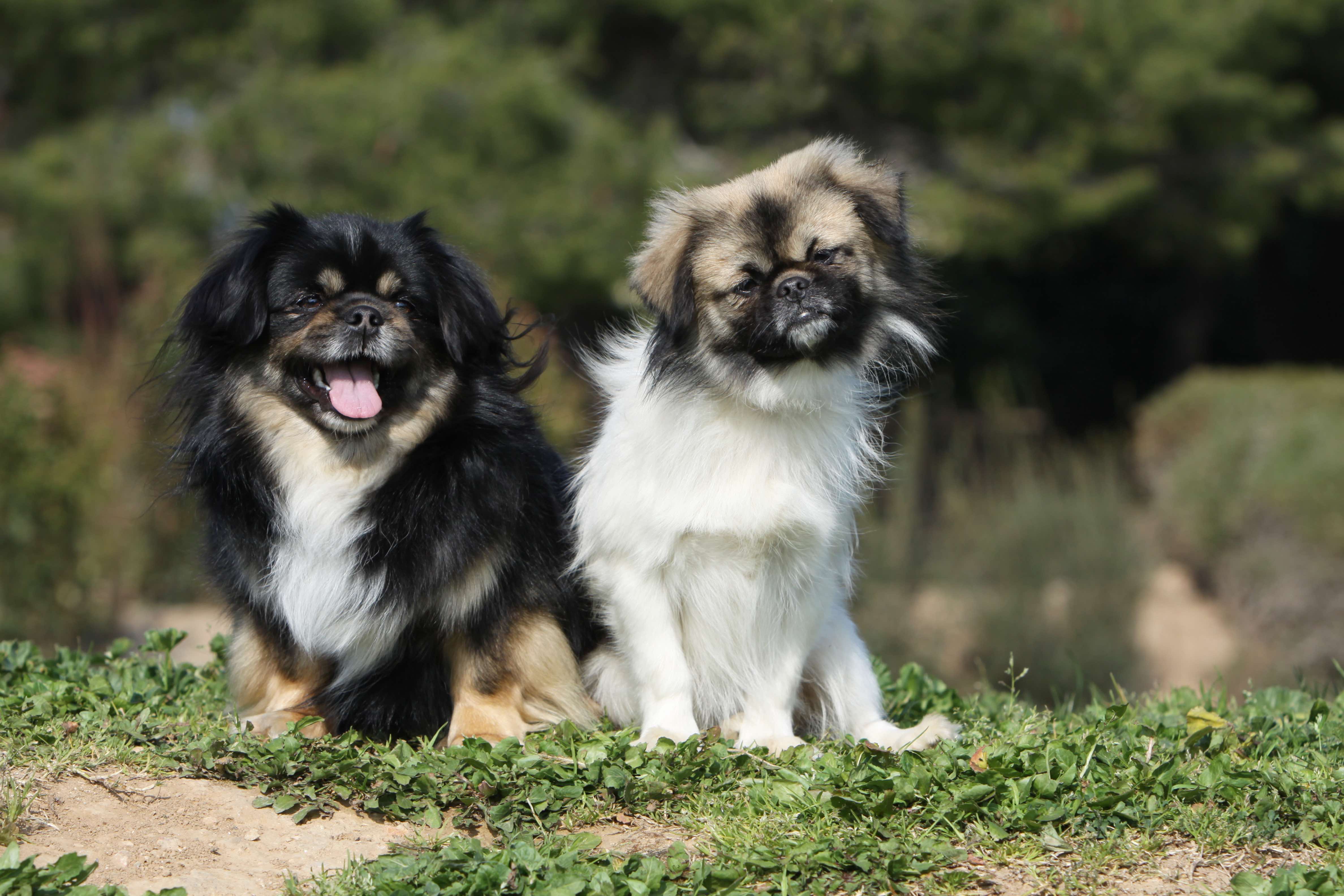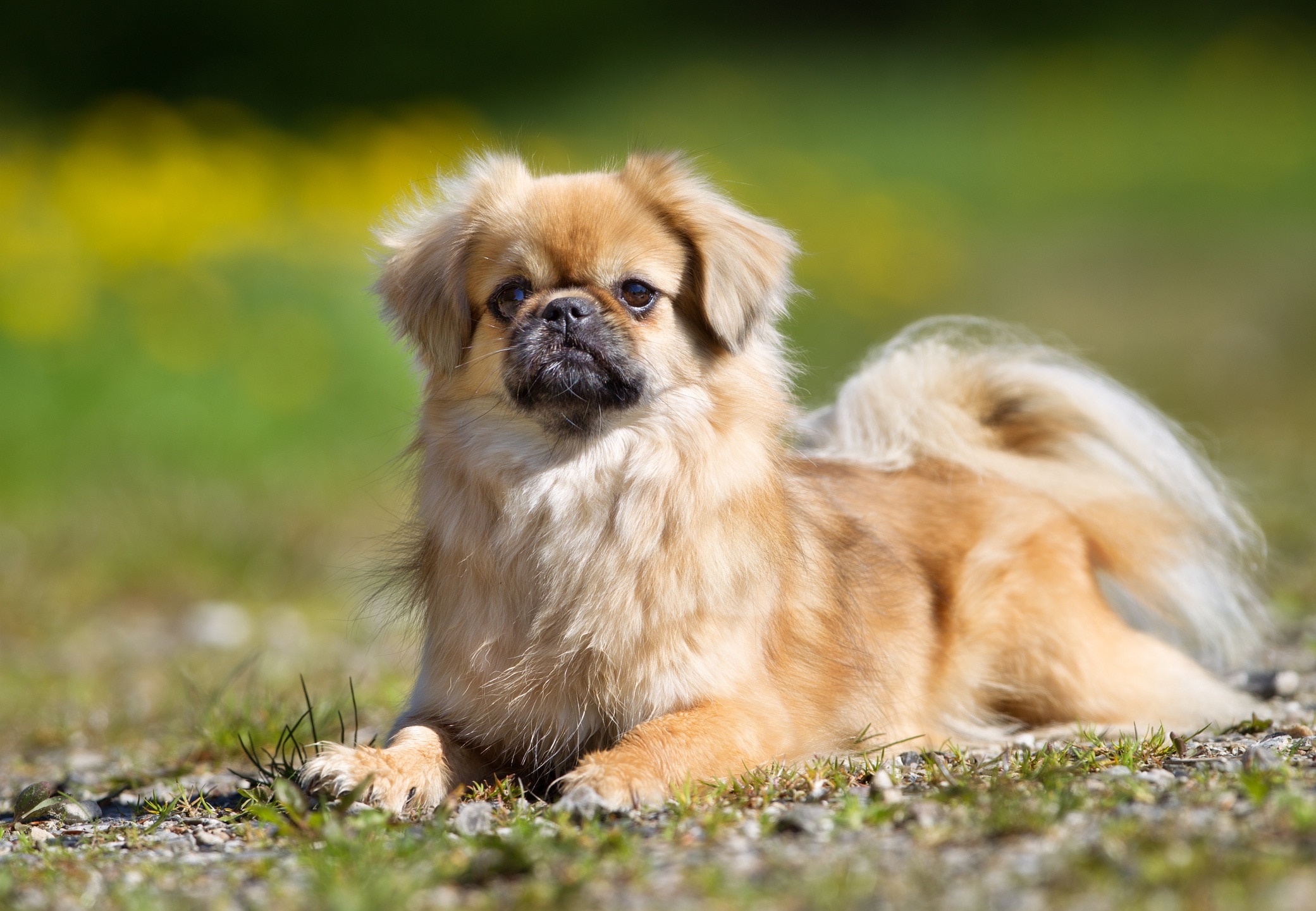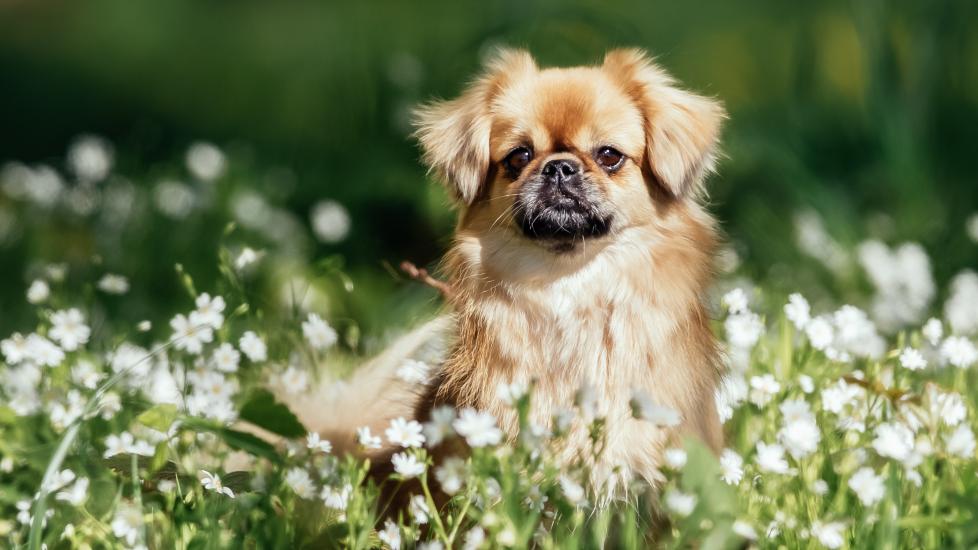Tibetan Spaniel
Bigandt_Photography/iStock / Getty Images Plus via Getty Images
The Tibetan Spaniel, sometimes referred to as the Tibbie, is a small, spunky breed with a unique history. Known for more than 2,000 years, Tibetan Spaniels hail from Tibet’s Himalayan Mountains, where they lived alongside Buddhist monks. They often rested on monastery walls to warn monks of approaching wolves or strangers. According to the Tibetan Spaniel Club of America (TSCA), the breed arrived in England in 1898 before reaching the U.S. in the 1960s.
Tibbies are small dogs, standing about 10 inches tall at the shoulder and weighing 9–15 pounds. Their distinct look includes a plumed tail with long feathering and lion’s mane-like fur around their neck.
Caring for a Tibetan Spaniel
Tibetan Spaniel dogs are often described as alert and are quick to warn their pet parents of anything unusual. Just as they did all those years ago at the monasteries, you might find your Tibetan Spaniel perched high on a lookout point, such as a windowsill or back of a sofa.
Above all, Tibbies are affectionate companions that thrive on attention from their pet parents, though they also have an independent streak. Their small size makes them great house or apartment dogs.
Tibetan Spaniel Health Issues

Tibetan Spaniels have an average lifespan of 12–15 years. Like all pups, the Tibetan Spaniel dog breed is susceptible to certain health conditions throughout their life.
Patellar Luxation
The patella (kneecap) is a small bone that normally sits in a groove within the femur at the knee. In dogs with patellar luxation, the patella moves (luxates) outside of its designated groove when the knee is flexed. This abnormal movement can cause discomfort and may lead to osteoarthritis.
In small breeds like the Tibetan Spaniel, anti-inflammatory medications and joint supplements may be sufficient to control pain. In cases of severe luxation, your dog might need surgery to secure the kneecap.
Progressive Retinal Atrophy
Progressive retinal atrophy (PRA) is a term for a group of degenerative eye diseases that affect the layers of the eye responsible for vision. PRA eventually results in blindness. PRA isn’t a painful condition for dogs, but currently there is no effective treatment or cure.
The first signs of PRA are typically night blindness and increased clumsiness (walking or bumping into things). Talk to your veterinarian if you notice changes in your dog’s eyesight.
What To Feed a Tibetan Spaniel

Feeding a commercial kibble or wet food approved by the Association of American Feed Control Officials (AAFCO) is a good way to ensure your Tibbie receives a complete and balanced diet. Tibetan Spaniel puppies should be fed a food formulated specifically for puppies or designated for all life stages. Your veterinarian can help you choose the best food for your dog.
How To Feed a Tibetan Spaniel
Adult Tibetan Spaniels should be fed a measured amount twice a day. Tibetan Spaniel puppies should be fed at least three meals a day on a consistent schedule to prevent low blood sugar levels (hypoglycemia).
How Much Should You Feed a Tibetan Spaniel?
The amount of food a Tibetan Spaniel needs varies. Your dog’s food packaging has a feeding guide that typically recommends the total amount of food that should be given over a 24-hour period. You can use this as a general guide, but always talk to your veterinarian for the best advice. A dog’s exact calorie requirements depend on their age, health, lifestyle, and other factors.
Nutritional Tips for Tibetan Spaniels
As long as you feed your Tibetan Spaniel an AAFCO-approved, well-balanced diet, they will get all the nutrients they need from their food. Your vet may recommend nutritional supplements for your dog if they’re needed, but never give supplements to your Tibbie without first talking to your vet.
Behavior and Training Tips for Tibetan Spaniels
Tibetan Spaniel Personality and Temperament

Tibetan Spaniels have a happy attitude, and they love outings or playing games with their family. But they’re fine dozing on the couch with you, too. Although well-socialized Tibbies are friendly with animals and other dogs, you might find they’re more reserved with strangers.
According to the TSCA, Tibbies can adapt to almost any lifestyle. They’re known as sensitive dogs that sense and respond to their family’s moods and feelings.
Tibetan Spaniel Behavior
Daily exercise needs are minimal for Tibbies, but they’ll appreciate short on-leash walks and outdoor outings. As mentioned, Tibetan Spaniels were originally bred as guardians, so they love to keep watch and will bark at anything out of the ordinary—even if it’s just the delivery person.
Tibetan Spaniel Training
Tibbies have an independent streak, so training takes patience. They’re eager to please, though, so it’s important to start training Tibetan Spaniel puppies early. Like all dogs, use positive reinforcement training techniques with lots of treats and praise.
Tibetan Spaniels were originally bred as guardians, so they love to keep watch and will bark at anything out of the ordinary—even if it’s just the delivery person.
Begin socializing your Tibetan Spaniel puppy as soon as you bring them home. Puppies that are exposed to new people, places, animals, and experiences will be better adjusted and more confident in new situations throughout their life.
Fun Activities for Tibetan Spaniels
-
Scent work
-
Fetch
-
Rally
-
Snuggling
Tibetan Spaniel Grooming Guide
Tibetan Spaniels have a long and beautiful coat, but their grooming is more hands-off than you’d think. Pet parents can likely take care of their dog’s minimal grooming needs at home.
Skin Care
No special skin care is required for Tibetan Spaniels, but regular grooming will help keep their skin healthy. Talk to your veterinarian if you notice changes in your dog’s skin or if they seem itchy.
Coat Care
You can keep your Tibbie’s coat in top shape just by brushing it occasionally. It’s easy to maintain, but look for common places of matting, such as behind the ears, on the tail, or under the armpits.
Tibbie coats do not need to be trimmed. The only place you should trim your Tibetan Spaniel is the hair on the bottom of their paw pads. When hair gets too long there, your pup might slip on hard flooring or pick up excess dirt.
Eye Care
Tibetan Spaniels typically don’t require special eye care, but pet parents should watch for signs of PRA. If you notice changes in your dog’s eyes, such as discharge, call your vet.
Ear Care
It’s good to comb your Tibbie’s ear fringes once a week to prevent matting. Vets also recommend cleaning your dog’s ears often with a dog-specific ear cleaner to prevent infections.
Considerations for Pet Parents
Tibetan Spaniels are lively and can adapt to many lifestyles. Their small size and minimal exercise needs mean they’ll do well in either a house or apartment. But they love attention from their pet parents, so if you spend most of your days away from home, a Tibetan Spaniel might not be the best fit for your family.
When given enough love and attention, they make great, loyal companions. Just remember: They’ll often be on the lookout and bark from the window, as they were bred to do.
Tibetan Spaniel FAQs
Are Tibetan Spaniels good pets?
Yes, Tibetan Spaniels can be wonderful pets. The TSCA calls them “the perfect small dog.”
Do Tibetan Spaniels bark a lot?
Because they were originally bred as little guardians, Tibetan Spaniels are prone to barking if they want to alert their family to something, like a delivery person or a strange noise.
Why are Tibetan Spaniels rare?
The TSCA says Tibetan Spaniels at one time only left the monasteries of Tibet “as treasured gifts to esteemed friends.” Later, when they reached Europe in the late 19th century, few Tibetan Spaniels were bred until after World War II. Today, it can be difficult to find a Tibetan Spaniel breeder in the U.S. or Canada.
Are Tibetan Spaniels cuddly?
Yes, the Tibetan Spaniel temperament can be called cuddly. They adore their pet parents, so it won’t be uncommon to find your Tibbie curled up on your lap.
How much does a Tibetan Spaniel cost?
The typical Tibetan Spaniel price can be as much as $2,000. You can also look for a Tibetan Spaniel rescue dog, which will cost less.
